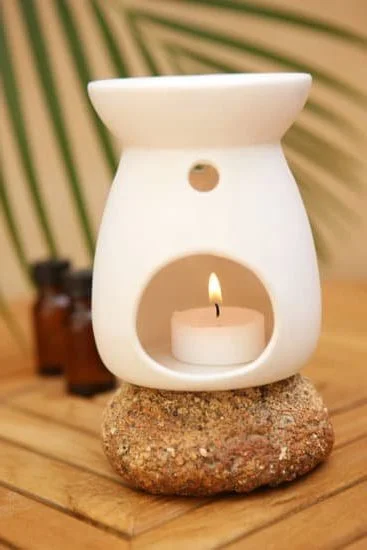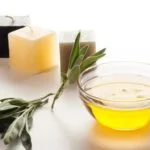Peppermint aromatherapy is a practice that harnesses the power of scent to promote well-being and enhance various aspects of our lives. The refreshing aroma of peppermint has been enjoyed for centuries, not only for its pleasing smell but also for its therapeutic benefits. In this article, we will explore the world of peppermint aromatherapy, delving into its origins, properties, and the science behind its effectiveness.
Peppermint essential oil, derived from the leaves of the Mentha piperita plant, is widely used in aromatherapy due to its invigorating and uplifting properties. We will delve into how this oil is extracted and learn about the key properties that make it effective in enhancing mood, relieving stress, and boosting focus.
Understanding how peppermint aromatherapy works requires exploring the fascinating science behind the sense of smell. By understanding how our olfactory system interacts with scents, we can better grasp why peppermint aroma has such profound effects on our mental and emotional states. In this article, we will uncover these scientific mechanisms and shed light on the connection between scent and our well-being.
As we embark on this journey into the world of peppermint aromatherapy, we will also examine its numerous benefits. From improving mood to relieving stress and enhancing focus, there are various ways in which incorporating peppermint essential oil into your daily routine can positively impact your life. We will explore these benefits in detail and provide practical tips on how to experience them firsthand.
Peppermint aromatherapy offers a multitude of ways to enjoy its therapeutic effects. We will discuss different methods of using peppermint essential oil for aromatherapy purposes, including diffusers, inhalation techniques, and topical application. Additionally, we will outline important precautions to ensure safe usage while highlighting potential side effects that need to be considered when incorporating this practice into your wellness routine.
By combining peppermint with other essential oils known for their therapeutic properties, it is possible to create synergistic blends that enhance the therapeutic effects. We will explore some popular blends and discuss how they can be used to address specific concerns and promote overall well-being.
Throughout this article, we will also include personal testimonials from individuals who have experienced the benefits of peppermint aromatherapy firsthand. Hearing about their experiences can provide valuable insights and inspiration for those interested in incorporating this practice into their own lives.
Finally, we will address common queries and provide answers to frequently asked questions about peppermint aromatherapy. By providing clear information and dispelling any misconceptions, we hope to empower readers with the knowledge needed to embrace the refreshing and invigorating world of peppermint aromatherapy.
Understanding Peppermint Essential Oil
Peppermint essential oil is derived from the peppermint plant, scientifically known as Mentha x piperita. It is a hybrid plant that is a cross between watermint and spearmint. The origins of peppermint can be traced back to Europe and the Middle East, where it has been used for centuries in various traditional practices.
There are several methods of extracting peppermint essential oil, but the most common one is steam distillation. In this process, the leaves and flowering tops of the peppermint plant are subjected to steam, which causes the release of the volatile aromatic compounds present in the plant. The steam containing these compounds is then condensed back into a liquid form, resulting in peppermint essential oil.
Peppermint essential oil is characterized by its strong minty scent with a cool undertone. Its key properties include being analgesic, antiseptic, antibacterial, antifungal, anti-inflammatory, and stimulating. These properties make it a versatile oil that can be used for various purposes such as relieving pain, promoting digestion, alleviating headaches, boosting energy levels, and improving mental clarity.
| Properties | Description |
|---|---|
| Analgesic | Relieves pain and discomfort |
| Antiseptic | Kills or prevents growth of microorganisms |
| Antibacterial | Kills bacteria or inhibits their growth |
| Antifungal | Kills fungi or inhibits their growth |
| Anti-inflammatory | Reduces inflammation and swelling |
| Stimulating | Increases energy and mental alertness |
Overall, understanding the origins, extraction methods, and key properties of peppermint essential oil is essential for harnessing its therapeutic benefits in aromatherapy. Whether you are looking to relieve pain, boost your mood, or improve focus, peppermint aromatherapy can be a powerful tool to promote overall well-being.
How Does Peppermint Aromatherapy Work? Exploring the Science behind the Scent
Many people find the scent of peppermint to be refreshing and invigorating, but have you ever wondered how peppermint aromatherapy actually works? In this section, we will explore the science behind the scent of peppermint and why it has such a powerful impact on our mood and well-being.
Peppermint essential oil contains various chemical compounds that contribute to its therapeutic properties. One of the key components is menthol, which creates a cooling sensation on the skin and mucous membranes. This cooling effect is believed to activate certain receptors in our body, leading to a range of physiological responses.
When we inhale the aroma of peppermint essential oil, it travels through our olfactory system and stimulates our brain’s limbic system. The limbic system plays a crucial role in regulating emotions, memory, and stress response. As a result, inhaling peppermint can have a direct impact on our mood and overall mental well-being.
Studies have shown that inhaling peppermint essential oil can help reduce feelings of stress and anxiety. It is believed that the scent of peppermint triggers the release of certain neurotransmitters in the brain, such as serotonin, which is known as the “feel-good” hormone. These neurotransmitters help promote relaxation and a sense of calmness.
Furthermore, peppermint aromatherapy has been found to enhance focus and improve cognitive performance. The scent of peppermint can stimulate alertness and mental clarity by increasing blood flow to the brain. This increased blood flow can enhance concentration, memory retention, and overall cognitive function.
The Benefits of Peppermint Aromatherapy
Peppermint aromatherapy offers a range of benefits for both the mind and body. The refreshing and invigorating scent of peppermint essential oil has been shown to have mood-boosting effects, relieve stress, and enhance focus. Whether it is used in a diffuser, through inhalation, or topically applied, peppermint aromatherapy can help improve overall well-being.
Mood Boosting
One of the key benefits of peppermint aromatherapy is its ability to boost mood. The scent of peppermint has a stimulating effect on the brain, promoting feelings of happiness and positivity. It can help uplift the spirits and create a sense of calm and relaxation.
Stress Relief
Peppermint aromatherapy is also known for its stress-relieving properties. Inhaling the scent of peppermint essential oil can help soothe and relax both the mind and body. It has been found to reduce levels of cortisol, the stress hormone, thereby helping to alleviate symptoms of stress such as anxiety and tension.
Enhanced Focus
In addition to boosting mood and relieving stress, peppermint aromatherapy can also enhance focus and concentration. The invigorating scent of peppermint stimulates the brain’s cognitive function, improving alertness and mental clarity. It can be particularly beneficial for those who need a mental pick-me-up or are looking to improve their productivity.
Overall, incorporating peppermint aromatherapy into your daily routine can have many positive effects on your well-being. Whether you are feeling low in mood, stressed out, or struggling with focus, this natural remedy can provide gentle relief without any harmful side effects. So why not give it a try and see how peppermint aromatherapy can benefit you?
Different Ways to Use Peppermint Essential Oil for Aromatherapy
Peppermint essential oil is a versatile tool in the practice of aromatherapy, offering various ways to experience its benefits. The most popular methods of using peppermint essential oil include diffusion, inhalation, and topical application.
- Diffusion: One of the easiest and most effective ways to enjoy the therapeutic benefits of peppermint essential oil is through diffusion. This involves using a diffuser to disperse the oil into the air, creating a calming and invigorating environment. Simply add a few drops of peppermint essential oil to your diffuser along with water and let the soothing scent envelop your space.
- Inhalation: Direct inhalation is another common method for experiencing the benefits of peppermint aromatherapy. Add a few drops of peppermint essential oil to a tissue or cloth and inhale deeply. This can help clear congestion, improve focus and concentration, and provide relief from headaches or migraines.
- Topical Application: Applying peppermint essential oil topically allows for direct contact with the skin, facilitating absorption into the bloodstream for systemic effects. Diluting pure peppermint essential oil with a carrier oil such as coconut or sweet almond oil is recommended before applying it to the skin due to its high concentration level. This method can be used for massage therapy, bath oils, or as an ingredient in homemade skincare products.
It’s important to note that everyone’s sensitivity to essential oils varies, so it’s crucial to perform a patch test before applying any peppermint essential oil topically. Additionally, if you have sensitive skin or are pregnant or nursing, it’s advisable to consult with a healthcare professional before incorporating topical application into your aromatherapy routine.
Precautions and Potential Side Effects
Peppermint aromatherapy can provide numerous benefits for the mind and body, but it is important to understand the precautions and potential side effects associated with its use. While generally considered safe when used properly, there are certain guidelines that should be followed to ensure the best and safest experience with peppermint essential oil.
Dilution
One important precaution when using peppermint essential oil is proper dilution. Peppermint oil is highly concentrated and can be irritating to the skin if used undiluted. It is recommended to dilute it with a carrier oil, such as coconut or almond oil, before applying topically. The general guideline for dilution is 2-3 drops of peppermint oil per teaspoon of carrier oil. This will help prevent any potential skin sensitivities or reactions.
Allergic Reactions
While allergies to peppermint are rare, it is still possible for some individuals to have an allergic reaction to the essential oil. To determine if you may be allergic, perform a patch test before using peppermint aromatherapy on a larger area of your body. Apply a small amount of diluted peppermint oil on a patch of skin and wait for 24 hours to see if any redness, itching, or irritation occurs.
Sensitivity in Certain Individuals
Some individuals may have heightened sensitivity to peppermint essential oil due to various factors such as age, pregnancy, or certain medical conditions. If you fall into these categories or have known allergies or sensitivities, it is recommended to consult with a healthcare professional before using peppermint aromatherapy.
Avoiding Eye and Mucous Membrane Contact
It is crucial to avoid direct contact of peppermint essential oil with the eyes or mucous membranes as it can cause irritation and discomfort. If accidental contact occurs, immediately flush the affected area with plenty of water and seek medical attention if necessary.
Children and Pets
When using peppermint aromatherapy around children or pets, it is important to exercise caution. Peppermint oil should never be ingested by children or animals as it can be toxic. Additionally, use lower dilutions when applying topically on children’s skin, and always keep the essential oil out of their reach to prevent accidental ingestion.
By following these safety tips and precautions, individuals can safely enjoy the benefits of peppermint aromatherapy while minimizing the risk of any potential side effects or adverse reactions. It is always advisable to consult with a healthcare professional before starting any new aromatherapy regimen, especially if you have any existing medical conditions or concerns.
Combining Peppermint with Other Essential Oils
Peppermint essential oil is known for its refreshing and invigorating scent, but did you know that it can also be combined with other essential oils to create synergistic blends? These blends can enhance the therapeutic effects of peppermint aromatherapy, providing even more benefits for your overall well-being.
One popular combination is peppermint and lavender essential oils. Lavender has soothing properties and is often used for relaxation and stress relief. When combined with peppermint, it creates a blend that can help alleviate tension, promote relaxation, and support better sleep. This blend is perfect for those who are looking to unwind after a long day or soothe their minds before bedtime.
Another effective blend is peppermint and eucalyptus essential oils. Eucalyptus has cooling properties and is commonly used to clear the respiratory system. When combined with peppermint, it creates a powerful duo that can help relieve congestion, open up the airways, and promote easier breathing. This blend is particularly beneficial during cold and flu season or for individuals suffering from allergies.
For those seeking an uplifting experience, combining peppermint with citrus essential oils like lemon or orange can provide an energizing and mood-boosting effect. Citrus oils are known for their bright and invigorating scents, while peppermint adds a coolness that can enhance mental focus and clarity. This blend is ideal for creating a refreshing atmosphere in the home or office when you need a pick-me-up.
When combining essential oils, it’s important to note that not all combinations work well together. Some oils may have conflicting properties or overpowering scents when blended. It’s always recommended to do research or consult with a certified aromatherapist before creating your own blends.
Personal Experiences
Peppermint aromatherapy has gained a significant following of enthusiasts who have experienced its refreshing and invigorating effects. Personal experiences and testimonials from those who have incorporated peppermint essential oil into their daily routines can provide valuable insights into the benefits and effectiveness of this aromatic therapy.
The Cooling Sensation and Uplifting Mood
Many individuals who have used peppermint aromatherapy report a cooling and refreshing sensation when inhaling the scent. This cooling effect is particularly useful during hot weather or after physical activities. In addition to its physical effects, peppermint aromatherapy is known for its ability to uplift mood and create a sense of energy and positivity. Users often describe feeling more alert and focused, making it an ideal choice for boosting productivity during work or study sessions.
Relieving Stress and Tension
Another common testimonial from peppermint aromatherapy enthusiasts is its stress-relieving properties. The aroma of peppermint has shown to reduce anxiety levels, ease tension, and promote relaxation. Many users incorporate peppermint essential oil into their self-care routine as a natural way to unwind after a long day or manage stress-induced symptoms such as headaches or muscle tension.
Enhancing Mental Clarity and Focus
Peppermint aromatherapy has been praised by individuals seeking improved mental clarity, focus, and concentration. Testimonials highlight how using peppermint essential oil in diffusers or inhalation methods can sharpen cognitive function, increase alertness, and enhance memory retention. This makes it a popular choice for students, professionals, or anyone looking to enhance their cognitive performance.
Personal experiences serve as valuable anecdotes that showcase the potential benefits of peppermint aromatherapy. However, it’s important to remember that individual results may vary. It is always recommended to consult with a healthcare professional before incorporating any new therapeutic practices into your routine.
Frequently Asked Questions
As peppermint aromatherapy continues to gain popularity, many people have questions about its uses, benefits, and potential risks. In this section, we will address some of the most frequently asked questions about peppermint aromatherapy.
- What is the best way to use peppermint essential oil for aromatherapy?
- What are the benefits of peppermint aromatherapy?
- Is peppermint aromatherapy safe for everyone?
Peppermint essential oil can be used in various ways for aromatherapy. One popular method is using a diffuser, which disperses the scent throughout a room. Inhalation is another common technique, where a few drops of peppermint oil are added to hot water and the steam is inhaled. Topical application can also be effective by diluting the essential oil with a carrier oil and applying it directly to the skin.
Peppermint aromatherapy has numerous potential benefits. It can help boost mood and increase energy levels, making it great for combating fatigue and improving focus. Peppermint oil is also known for its ability to relieve stress and anxiety. Additionally, it may provide relief from headaches and migraines due to its cooling properties.
While peppermint essential oil is generally considered safe, there are some precautions to keep in mind. It should not be used on infants or young children without consulting a healthcare professional. Individuals with sensitive skin may experience irritation when applying undiluted peppermint oil topically. It’s important to perform a patch test before using it on larger areas of the skin.
These are just a few of the commonly asked questions regarding peppermint aromatherapy. By addressing these inquiries, individuals can better understand how to incorporate this powerful scent into their wellness routine.
| Question | Answer |
|---|---|
| What is the best way to use peppermint essential oil for aromatherapy? | Peppermint essential oil can be used in various ways for aromatherapy. One popular method is using a diffuser, which disperses the scent throughout a room. Inhalation is another common technique, where a few drops of peppermint oil are added to hot water and the steam is inhaled. Topical application can also be effective by diluting the essential oil with a carrier oil and applying it directly to the skin. |
| What are the benefits of peppermint aromatherapy? | Peppermint aromatherapy has numerous potential benefits. It can help boost mood and increase energy levels, making it great for combating fatigue and improving focus. Peppermint oil is also known for its ability to relieve stress and anxiety. Additionally, it may provide relief from headaches and migraines due to its cooling properties. |
| Is peppermint aromatherapy safe for everyone? | While peppermint essential oil is generally considered safe, there are some precautions to keep in mind. It should not be used on infants or young children without consulting a healthcare professional. Individuals with sensitive skin may experience irritation when applying undiluted peppermint oil topically. It’s important to perform a patch test before using it on larger areas of the skin. |
Conclusion
Peppermint aromatherapy offers a refreshing and invigorating experience that can enhance various aspects of our well-being. From boosting mood to relieving stress and enhancing focus, the benefits of peppermint essential oil are numerous. By understanding its origins, extraction methods, and key properties, we gain a deeper appreciation for this powerful scent.
The science behind peppermint aromatherapy reveals how the aroma interacts with our brain and body, influencing our emotions and physiological responses. Whether using diffusers, inhalation, or topical application, there are different ways to incorporate peppermint essential oil into our lives. However, it is important to exercise caution and adhere to safety guidelines to prevent any potential side effects.
Combining peppermint with other essential oils can create synergistic blends that amplify their therapeutic effects. Many individuals have personally experienced the benefits of peppermint aromatherapy and shared their testimonials. These personal stories add credibility to the power of scent in improving our well-being.
In conclusion, embracing the refreshing and invigorating world of peppermint aromatherapy allows us to tap into its multitude of benefits. Whether we seek mood enhancement, stress relief, or improved focus, this natural remedy has something to offer for everyone. By following safety precautions and exploring different methods of use, we can harness the power of peppermint essential oil to enhance our overall wellness. So why not give it a try and embark on a fragrant journey towards better health?
Frequently Asked Questions
What does peppermint aromatherapy do?
Peppermint aromatherapy is known for its refreshing and invigorating properties. When the scent of peppermint essential oil is inhaled, it can stimulate the olfactory system and trigger a variety of responses in the body.
The aroma has a cooling effect, which can help to alleviate fatigue and promote mental alertness. Additionally, peppermint aromatherapy has been found to have mood-lifting abilities, making it useful for reducing stress, anxiety, and depression symptoms.
Is peppermint oil safe for aromatherapy?
Generally, peppermint oil is safe for aromatherapy when used properly and in moderation. However, it’s important to note that essential oils are highly concentrated substances and should always be diluted before use on the skin or inhaled. Undiluted peppermint oil may cause skin irritation or allergic reactions in some individuals.
It’s also worth mentioning that ingestion of large quantities of peppermint oil can be toxic and should be avoided without proper guidance from a healthcare professional. Overall, following the appropriate guidelines and using caution when handling essential oils ensures safe use during aromatherapy practices.
What are the emotional benefits of peppermint essential oils?
Peppermint essential oils possess several emotional benefits that can positively impact one’s well-being. The scent of peppermint is commonly associated with increased energy levels and mental clarity due to its stimulating properties.
It has been observed that inhaling peppermint essential oil can help improve focus, concentration, and alertness while providing an overall sense of rejuvenation. Moreover, this revitalizing aroma has been found to relieve feelings of stress and tension by promoting relaxation and calmness in both the mind and body, making it a valuable tool for emotional support during stressful periods or when experiencing low moods.

Are you looking for a natural way to improve your health and wellbeing?
If so, aromatherapy may be the answer for you.





